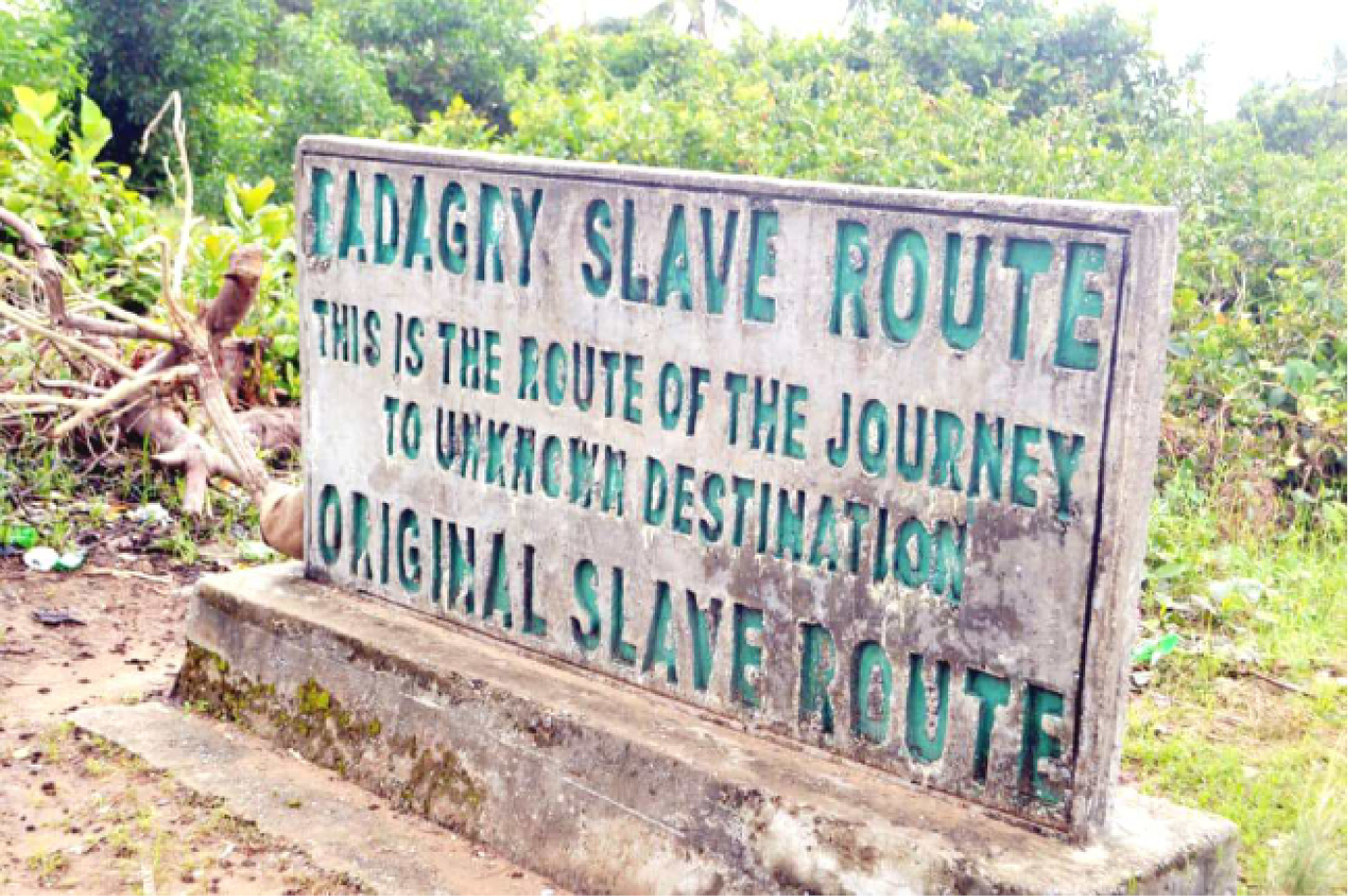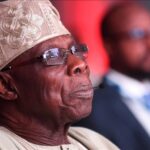The 2019 Diaspora Festival in Badagry, the centre of the transatlantic slave trade in West Africa, reincarnated the sad memories of the slave trade which took place between the 15th and 19th Century, as some African-Americans return to their roots.
It was a nostalgic event, filled with emotion, but it evoked a sense of identity, the culture and heritage of Africa, as a group of African-Americans came from different parts of the United State of America, Jamaica, Puerto Rico and Europe to trace their roots.
The festival was the third edition put together by the office of the then Senior Special Assistant to the President on Diaspora Affairs and now the Chairman/Chief Executive Officer (CEO) of the Nigerians in Diaspora Commission (NIDCOM), Hon. Abike Dabiri-Erewa.
From October 14 to 19, the Badagry community played host to a series of events to commemorate the festival put together in partnership with the Lagos State Government.
Of more significance, however, was the tour of the slave route through which the ancestors of Africa, especially West and Central Africa was shipped mainly to America in the dark days of the transatlantic slave trade in the middle of the 15th Century when Portugal, and subsequently, other European kingdoms, expanded overseas and reached Africa in their human trade. It is estimated that by the early 16th Century, as much as 10 per cent of Lisbon’s population was of African descent.
The Diaspora festival tagged, ‘Door of Return Ceremony’ witnessed the re-enactment of the experience of the captured slaves chained in the neck and legs as they wriggled through the ‘Point of No Return’ to the ship.
The Diaspora visitors, led by Dr. David Anderson, who has been conferred with the title of Jogbe of Badagry, defied the rain to walk through the slave route in the quiet Island of Gberefu through which the captured slaves were moved to the ship already waiting in the Atlantic Ocean.
The visitors, who also include Pastor Angel Cartagena; David Dimas, Bishop Marcus Johnson, Marian Edmonds Allen, Janise Fonseca, Cecily Cooper, Linda Lindquist, Dr. George Miller, Mike Perez and Chief Melvin Russell, who is Acting Deputy Commissioner of Police in The Baltimore Police Department, had earlier visited other tourist sites like the Brazilian Barracoon belonging to Chief Seriki Williams Abass, a slave turned slave trader who settled in Badagry; the Wawu of Badagry compound which housed the Canon Guns and where the first Union Jack was hoisted, and the Mobee Family Museum housing the relics of slave trade.
At the Barracoon of Seriki Williams are two cells where male and female slaves were separately kept. Each cell accommodated 40 slaves all chained. During the Diaspora festival, Dr. Anderson broke down in tears as he offered prayers after inviting about 10 people into the cell which became very stuffy and everyone drenched in perspiration in less than a minute to show the horrible condition of the cell where 40 captured ancestors of Africa were stuffed in and all chained in the legs.
Also at the Mobee Family Museum, where several slave trade artefacts were kept, there was a re-enactment of how heavy chains were tied on the neck of slaves to prevent them from escaping.
However, the walk through the ‘Point of No Return’ was the climax of the four-day event. After the team took an engine powered canoe to Gberefu community, there was the first signpost with the inscription, “Badagry Slave Route: This is the route of the journey of unknown destination, original slave route.” This was where the journey started. The route path was flooded and shrubby. The visitors and participants had to remove their footwears to take a walk in the flooded path. Filing in one to three directions, the participants took a long walk of about three kilometres before reaching the point with another inscription, “Original Spot Slaves Spirit Attenuation Well”.
According to historical accounts and as accentuated by the tour guide, Anago James Osho, water from the spirit attenuation well was given to slaves on getting to the spot which is few meters away from the Atlantic Ocean. It is said that the water would take effect three months into the journey, making a slave forget everything about his past but the life of slavery he has been sold into. The well is still full to the brim and many locals are said to be scared of drinking from it many centuries after the slave trade was abolished.

And from the attenuation well, the journey continues to another point labelled, “Point of No Return: Journey to Unknown Destination” with emotion running high among the Diaspora visitors in response to the cruel fate which befell the forefathers of West and Central Africa. Any slave who made it to this particular point was gone for life on a journey which neither he nor his captor had any idea about its point of termination.
This was because the European slave traders usually made a detour when they felt a particular destination along the Atlantic Ocean was not safe to berth.
The tour guide said, “Imagine our ancestors chained on a single file, walking down the slave route, hearing that sound behind, the sound of the sea that they have never held before and when they got close, they saw water that has life, moving water and a lot of them were brought from the hinterlands with rivers and streams, but have never seen water as big as this.
“What they (the slave traders) did to us was psychologically motivated and it worked on us and unfortunately it is still working because it is easy for us to let go of the chains on our hands. What about the chain on our mind? So, once the ancestors got here (the point of no return near the Atlantic Ocean), it becomes a journey to a destination. And it is not just a journey to an unknown destination for Africans; they were taking away even the Europeans especially when the British were scouting the Atlantic Ocean for slave ships. Once they heard or knew that the British Navy is somewhere, they looked for a place to hide their ships. So, it is also a journey of unknown destination for them.”
Though it used to be the ‘Point of no return’, the African-Americans are poised to turn the table and make the Gberefu Island a point of unification of Americans and Europeans of African descent. This is the mission of the team, according to Dr. Anderson, a popular US Pastor, and founder of Bridge Leader Network. He said it is important for black Americans to know their root and identity like other nationalities in America.
He said, “The Italian Americans go back to their country in Italy, the German American goes back to his country in Germany, the Turkish American goes back to his country in Turkey but what is a black American? Where is black? Is black a place? How do I go to find black?
“So you have a lot of black Americans who don’t know their history, their heritage and so there is the need for a bridge to be built between the continent and the Diaspora and when the Diasporans come home, it helps fill their sense of identity, it also helps fill their people that are here wondering where their brothers and sisters have gone. So there used to be a place on this coast known for family separation? We now want to turn it to a place of family reunification. So, I keep coming back because it inspires me and I keep bringing other people back so it can inspire them and educate them so we can build bridges of reconciliation between the continent and the Diaspora.
“Last year I brought 18 people with me, all of whom were African-Americans except two. One was of Indian descent, the other one was from Hispanic descent. This year, I brought 10 people with me, influential people. But this time it is multi-cultural. Three of them are white, three of them are Hispanic; three are African-Americans and one is Nigerian-American. Three of the 10 are women. So, I am bringing back people from the Diaspora, not just black Americans but I want to bring everyone back because this is where humanity began anywhere on the continent of Africa. So it is more than an assurance, it is a demand that we will build this bridge.”

To fast-track the reunification of African-Americans, Dr. Anderson has been allocated a very large expanse of land in Gberefu Island to build a multi-million dollar Diasporan Royal Palace and Resort. The project, he said, had already seen the buy-in of two Hotel corporations which are willing to invest in the Resort estimated to cost $40 to $50m, according to Anderson.
Mrs Dabiri-Erewa in an emotion-laden voice lamented the plight of Africans in the hands of the European slave merchants. However, she said it is high time Africans moved on and put the issue behind.
She said, “This is emotional; it is touching knowing what went down here. It is a pity Africans went through so many pains but they should get out of that and go and develop. And the only way we can do it is by working with any African, wherever they are in the world. If you don’t get involved in developing the continent, the world will look down on you. That is what I saw here.
“That is why I am glad that the Diasporas are coming here. And as they are coming here, they are being led to what they can do for Africa, particularly in Nigeria here. It is a land of opportunities. It is a virgin land waiting to be tapped. For me, it is a lifetime experience and it is an experience everybody should have. We will work with the state, with the Commission and NGOs to see the best we can do to project our country.”
“You cannot understand the whole thing except you feel what we have felt. This is history and this is irreplaceable, it needs to be tapped and that is what we have been working to ensure that we get there. They came from various parts of the world. It is just amazing what we have here. You know the African continent and the Nigerian will lead the way to ensure that Africa is truly the giant of the world. The future is here”.
On the plans for the festival, the SSA added “We have come now to the point of no return where our ancestors were taken away. We have opened the door of return and you know it is a symbolic door. The door to prosperity, freedom and joy. So, that is what we are doing here and you can see our visitors are feeling it and it is indescribable.”
And back from the ‘Point of No Return’, there was singing and dancing by various traditional dancers in the community to symbolically welcome the triumphant return of the visitor. The atmosphere was filled with joy and rapturous excitement. The feeling was that of freedom and a challenge for Africans to pick up the pieces of the ancient slave trade and work for a greater future for the continent.

 Join Daily Trust WhatsApp Community For Quick Access To News and Happenings Around You.
Join Daily Trust WhatsApp Community For Quick Access To News and Happenings Around You.


